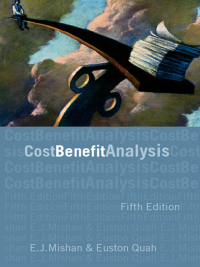OLD MATHJAX WEBVIEW


ABCO Manufacturing ABCO manufactures 2 products X and Y. ABCO's manager is interested in production and liquidity planning for the next 2 weeks of operation. The first week has four working days and the second week has five working days. Each working day has an eight-hour shift. The firm has 200 machines that can be used for the production of both X and Y. A unit of product X takes 10 hours of machining time, whereas a unit of Y takes 16 hours. Sales of product Y cannot exceed 800 units during the next two weeks, whereas there is no such restriction on the sales of product X. Within those limits, ABCO does not produce on inventory and sells immediately what it produces. Sales price, wages to labor; and cost of raw material per unit of product X and product Y do not vary over time and are given in the table below: Sales Price Labor Raw Material Profit Product X $55 $30 $10 SIS Product Y $125 $48 $50 $27 Wages are proportional to production volume and paid in the week when production occurs; raw materials are bought on credit of one week and delivered immediately, i.e., ABCO uses "just-in- time" delivery on weekly basis and maintains no inventory of raw materials for its current products. All sales are on credit, and payments are received one week from the date of sale. The salary of the manager is $200 per week; it is not affected by the production volume, but it is paid weekly like the wages are. The balance sheet at the beginning of the planning period (BOP) is given in the table below: Assets Liabilities and Equity Cash $2000 Accounts Payable $9500 Marketable Securities $600 Bank Loans $7500 Accounts Receivable $32000 Current Liabilities $17000 Inventories $2000 Long Term Debt $22500 Current Assets $36600 Fixed Assets $50000 Net Equity $47100 Total Assets $86600 Total Liabilities and Equity $86600 From it we see that ABCO receives $32,000 from accounts receivable and pays out $9500 at the start fo the first week. As a matter of policy, ABCO maintains inventories of $2000 in parts of some obsolete models. The current balance of marketable securities is earmarked for tax payments, which are due later in the year. ABCO maintains a minimum cash balance of $500 and has an open line of credit of $7500 from a local bank. This line of credit is presently fully used, but repayment and interest payments on its loan are scheduled for later in the year. In order to preserve a favorable picture of the firm's financial situation, the manager has agreed with the local bank that ABCO's "quick ratio" should not drop below 2.0. a. Verify that at the beginning of the period ABCO has a quick ratio greater than or equal to 2.0. Show your calculations. b. Formulate the problem of finding a profit-optimal production mix for ABCO that is within the various physical and policy restrictions as well as the limited scope of ABCO's financial capabilities. This should be a two period linear program. c. Compute a profit-optimal product-mix for ABCO using EXCEL SOLVER. d. What is the cash balance of ABCO at the end of week 1 and week 2? Summarize your findings in a "cash budget". e. To ensure "smooth" production schedule ABCO's management wants that the two weekly production volume to schedule for product X and product Y, respectively, do not fluctuate too widely. More precisely, management wants the absolute difference of the production volume of product X to not exceed 20% of total production volume for product X over the two periods and likewise for product Y. Reformulate the linear program to include these considerations








